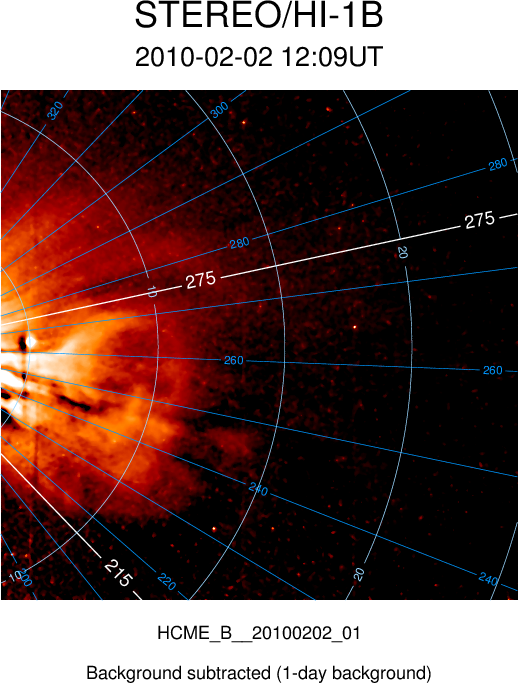The Sun unleashes a gigantic cloud of plasma and magnetic field into interplanetary space. These so-called coronal mass ejections (CMEs) are main causes of space weather disturbances, including colorful aurora and various hazards to modern technology in space and on ground. Predicting accurately space weather conditions is becoming increasingly important.
Even the basic question whether a given CME will hit the Earth or not remains surprisingly difficult to answer. Wide angle heliospheric imaging is a compelling future way for systematic space weather forecasting. The accuracy of the methods based on this instrumentation to predict CME arrivals has however not been previously tested using a large sample of events. In the recently published Space Weather paper led by Chris Möstl from Space Research Institute Austrian Academy of Sciences we validate a self-similar expansion model to predict the CME impacts using eight years of heliospheric imaging observations from the twin STEREO spacecraft and the data from five in-situ spacecraft. The paper is done as part of the HELCATS project and we used over 1300 CMEs extracted from the HELCATS catalogues.

We found that approximately one third of the CMEs that were predicted to hit a certain location were associated with a clear interplanetary CME. This percentage of “hits” may seem low. Our study however sets an important baseline for utilizing systematically heliospheric imaging to predict CME arrivals. We present various ways to improve the technique and decrease the number of “false alarms”. Instead of using the same fixed angular width for all CMEs, their more realistic sizes could be determined from the modeling. Also a significant fraction of “misses” are likely the cases where a CME arrived as predicted but produced less clear interplanetary signatures.
The up-coming Solar Orbiter and Parker Solar Probe will carry wide-field imagers. A space weather mission to the Lagrangian point L5 is also actively planned. A heliospheric imager onboard such a mission would provide continuous monitoring of the heliosphere between the Sun and Earth. Our study gives further support that this is an optimal location for predicting Earth-directed CMEs using heliospheric imaging.